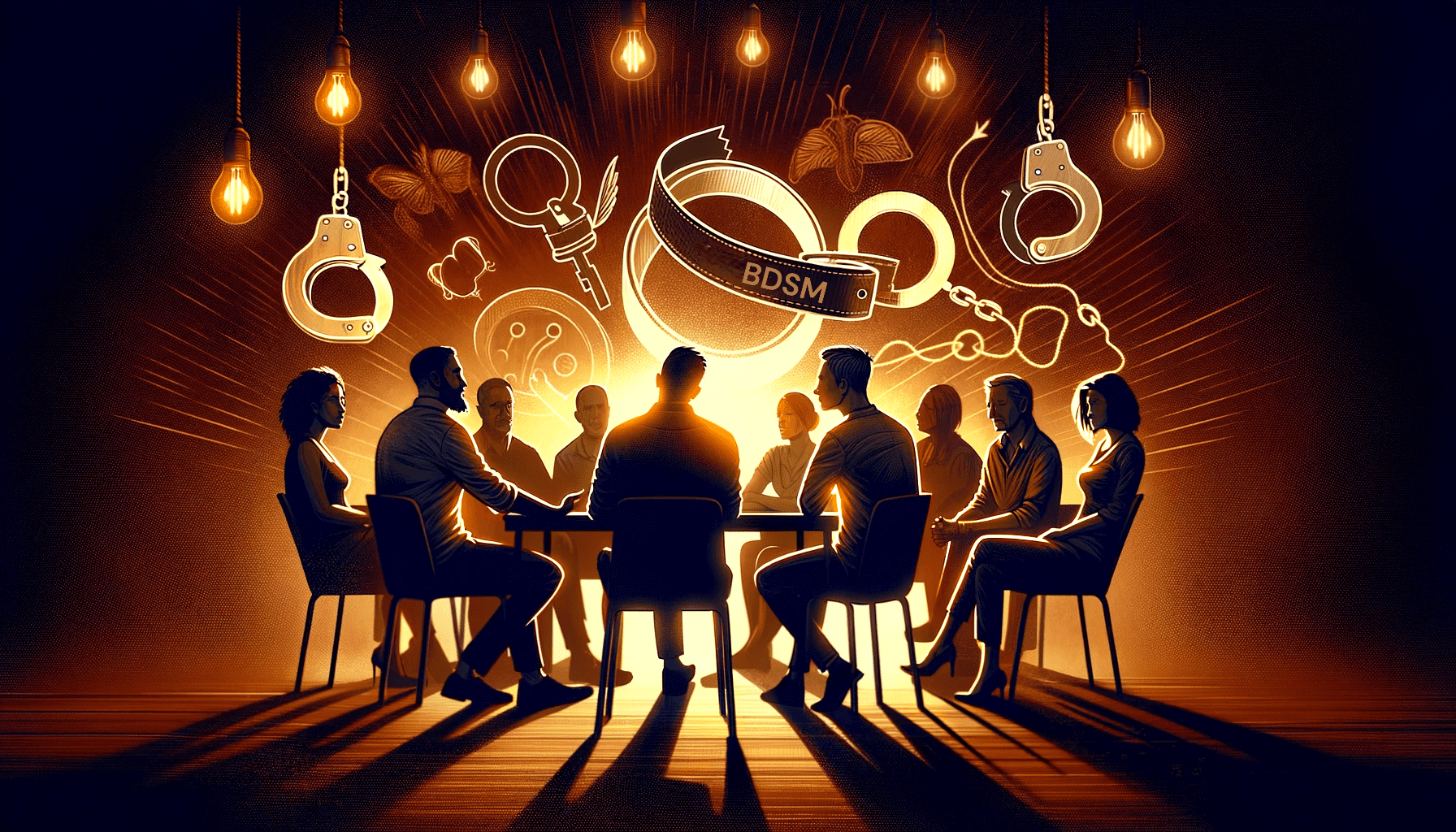Breaking BDSM stigma is crucial for fostering a more inclusive and understanding society. Despite its prevalence and the joy it brings to many, BDSM is often misunderstood and stigmatised. This blog addresses common misconceptions and societal stigmas surrounding BDSM, offering insights into how these perceptions can be changed.
The Roots of Stigma
The stigma surrounding BDSM is deeply rooted in societal norms and misconceptions. For years, anything outside the “vanilla” sexual norm was considered deviant or perverse. This perception has been perpetuated by sensationalised media portrayals and a lack of comprehensive sexual education. The result is a culture that often views BDSM with suspicion or outright disdain.
Common Misconceptions About BDSM

Creating Safe Spaces: Open discussions help dismantle misconceptions and promote understanding of BDSM.
- BDSM is Abusive
- One of the most harmful misconceptions is that BDSM is inherently abusive. In reality, BDSM is built on the principles of consent, communication, and mutual respect. Safe, Sane, and Consensual (SSC) or Risk-Aware Consensual Kink (RACK) are the foundational frameworks that practitioners adhere to, ensuring that all activities are agreed upon and enjoyed by all parties involved.
- Participants Have Psychological Issues
- Another myth is that those who engage in BDSM do so because of underlying psychological issues. However, research has shown that BDSM practitioners are no more likely to have psychological problems than the general population. In fact, many find that BDSM activities can be therapeutic and a way to explore and understand their desires in a safe environment.
- BDSM is Only About Pain
- While some BDSM practices involve pain, it is far from the central focus for many practitioners. BDSM can include a variety of activities that may not involve any pain at all, such as bondage, role-playing, and sensory play. The core of BDSM is about power dynamics, trust, and the consensual exchange of control.
- BDSM Participants Cannot Have Healthy Relationships
- Many believe that BDSM practitioners cannot have healthy, loving relationships. On the contrary, because BDSM requires a high level of communication and trust, many participants find that their relationships are incredibly strong and fulfilling. The negotiation and aftercare involved in BDSM play often lead to deeper emotional connections.
Changing Perceptions
Changing societal perceptions of BDSM requires education, representation, and open dialogue. Here are some ways we can work towards breaking down the stigma:
- Education
- Positive Representation
- Media portrayals of BDSM often focus on the sensational or the extreme. Positive, realistic representations in movies, TV shows, and literature can help normalise BDSM and show it as a healthy, consensual form of sexual expression.
- Open Dialogue
- Encouraging open, non-judgmental conversations about BDSM can help reduce stigma. People should feel free to discuss their interests and experiences without fear of shame or ridicule. This can be facilitated through community events, online forums, and support groups.
- Research
- Continued research into BDSM practices and their effects on participants can provide valuable data that challenges misconceptions. Publishing these findings in accessible formats can help inform public opinion and policy.

Trust and Consent: Fundamental principles of BDSM that help in changing societal perceptions.
Personal Stories: Humanising BDSM
Sharing personal stories from BDSM practitioners can be incredibly powerful. These narratives can humanise BDSM, showing that those who engage in these practices are not “others” but are our friends, colleagues, and neighbours. Hearing about the positive impact BDSM has had on individuals’ lives can help break down barriers and foster empathy and understanding.
Conclusion
The stigma surrounding BDSM is rooted in misunderstanding and societal norms that have long viewed alternative sexual practices with suspicion. By addressing common misconceptions, providing education, promoting positive representation, and encouraging open dialogue, we can begin to change these perceptions. BDSM, like any form of sexual expression, is valid and deserving of respect and understanding. Embracing this diversity enriches our collective experience and fosters a more inclusive and compassionate society.




0 Comments